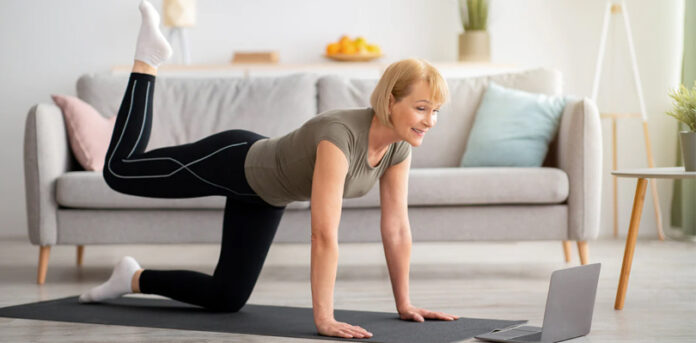Discover the secret to maintaining a strong and healthy body well into your golden years! In our blog post, “The Best Bodyweight Exercises for Seniors: It’s Never Too Late,” we unlock the power of age-defying fitness routines that require no fancy equipment or expensive gym memberships. Whether you’re a retiree looking to stay active or a senior seeking to regain strength and mobility, this guide is tailored just for you.
We’ll unveil a carefully curated collection of low-impact exercises that improve balance, flexibility, and overall well-being. Embrace a vibrant lifestyle and defy the limitations of age with these accessible bodyweight exercises that will leave you feeling energized and empowered. It’s time to rewrite the rules of aging and enjoy a lifetime of fitness!
Why It Is Important To Do Bodyweight Exercises For Seniors
Engaging in bodyweight exercises is of paramount importance for seniors due to its numerous benefits. Firstly, these exercises help maintain muscle mass and bone density, combating the natural age-related decline. By enhancing strength and stability, bodyweight exercises reduce the risk of falls and injuries, enabling seniors to maintain their independence.
Moreover, they improve flexibility and mobility, making everyday activities easier and more enjoyable. Bodyweight exercises also promote cardiovascular health, lowering the risk of heart disease and improving overall well-being. The best part is that they can be performed anywhere, without the need for expensive equipment or gym memberships. Embracing bodyweight exercises empowers seniors to stay fit, healthy, and vibrant as they age gracefully.
8 Bodyweight Exercises For Seniors
Squats
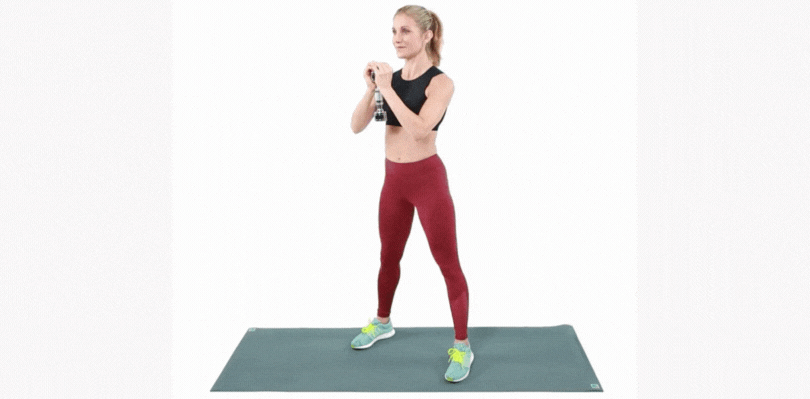
Squats are a fantastic exercise for seniors as they strengthen the lower body muscles, including the quadriceps, hamstrings, and glutes. Stand with your feet shoulder-width apart, lower your body as if sitting in a chair, and then stand back up. To ensure safety and stability, you can hold onto a chair or wall for support.
How To Do It:
- Stand with your feet shoulder-width apart, toes pointing slightly outward.
- Extend your arms straight out in front of you for balance.
- Slowly lower your body down as if sitting back on a chair.
- Keep your chest up, back straight, and knees aligned with your toes.
- Lower until your thighs are parallel to the ground or as far as comfortable.
- Push through your heels to stand back up to the starting position.
Push-Ups
Push-ups target the chest, shoulders, and triceps while also engaging the core muscles. Start in a modified position with your knees on the ground or against a wall, place your hands slightly wider than shoulder-width apart, and lower your body toward the ground by bending your elbows. Push back up to complete one repetition.
How To Do It:
- Start in a modified position by kneeling on the ground or placing your hands against a wall at chest height.
- Place your hands slightly wider than shoulder-width apart.
- Lower your body by bending your elbows while keeping your back straight.
- Lower until your chest is just above the ground or as far as comfortable.
- Push through your palms to extend your arms and raise your body back up.
Wall Sit
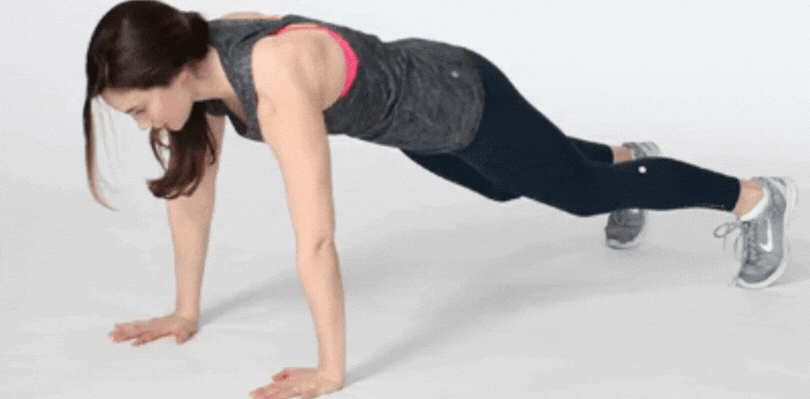
This exercise helps to strengthen the quadriceps and improve lower body endurance. Stand with your back against a wall and slide down until your knees are at a 90-degree angle as if sitting on an invisible chair. Hold this position for a set amount of time, gradually increasing the duration as your strength improves.
How To Do It:
- Stand with your back against a sturdy wall.
- Slide down until your knees are at a 90-degree angle, as if sitting in an invisible chair.
- Keep your back against the wall, feet flat on the ground, and knees aligned with your toes.
- Hold this position for a set amount of time, gradually increasing the duration as your strength improves.
Step-Ups
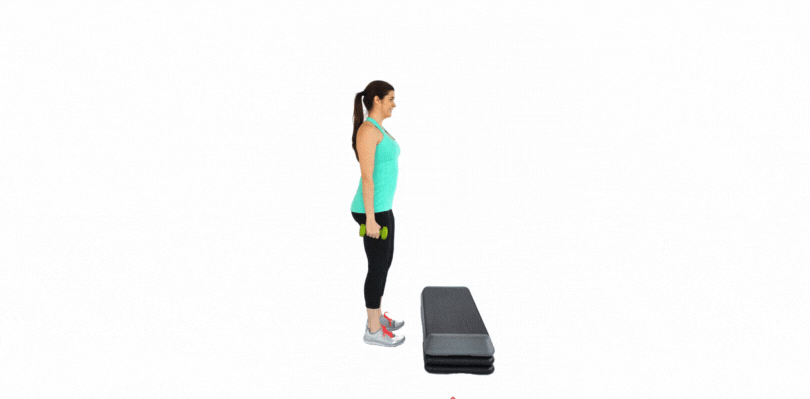
Step-ups target the muscles in the legs, particularly the quadriceps and glutes. Find a sturdy step or platform, step one foot onto it, and push through that leg to lift your body onto the platform. Step back down and repeat with the other leg. This exercise can be modified by using a lower step or incorporating hand support if necessary.
How To Do It:
- Find a sturdy step or platform.
- Place one foot flat on the step, ensuring it is secure.
- Push through the heel of the foot on the step to lift your body up onto the step.
- Step back down and repeat with the other leg.
- Maintain a steady pace and use a controlled movement throughout.
Plank
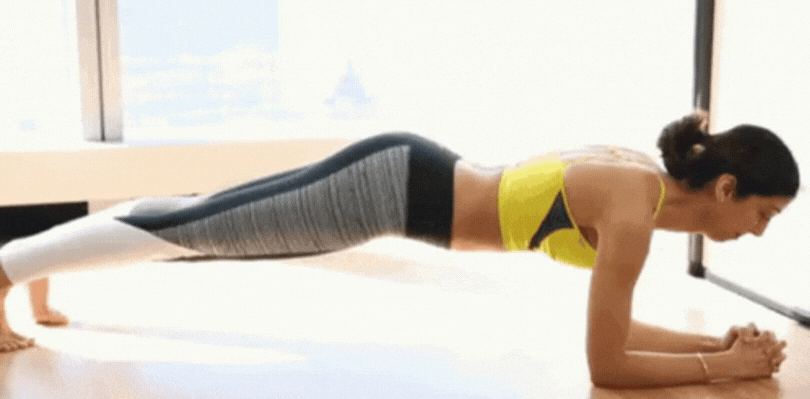
Planks are excellent for core strengthening. Start in a push-up position, with your weight on your forearms and toes. Keep your body in a straight line from head to toe, engaging your abdominal muscles. Hold this position for as long as you can maintain good form, gradually increasing the duration over time.
How To Do It:
- Start by getting into a push-up position with your palms on the ground and your body straight.
- Lower onto your forearms, ensuring they are directly below your shoulders.
- Engage your core by tightening your abdominal muscles.
- Hold this position, keeping your body in a straight line from head to toe, for as long as you can maintain good form.
- Focus on breathing steadily throughout the exercise.
Standing Calf Raises
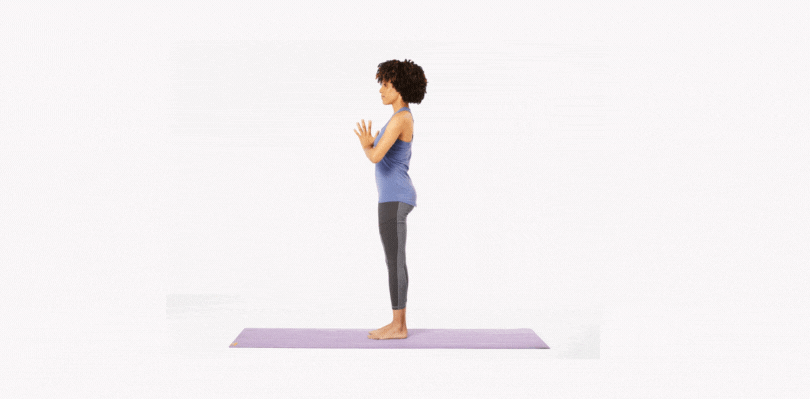
This exercise targets the calf muscles and improves balance. Stand near a wall or chair for support, rise up onto your toes, and then lower back down. Repeat for a set number of repetitions.
How To Do It:
- Stand near a wall or chair for support if needed.
- Rise up onto your toes, lifting your heels off the ground.
- Hold for a moment at the top.
- Lower your heels back down to the starting position.
- Repeat for a set number of repetitions.
Seated Leg Lifts
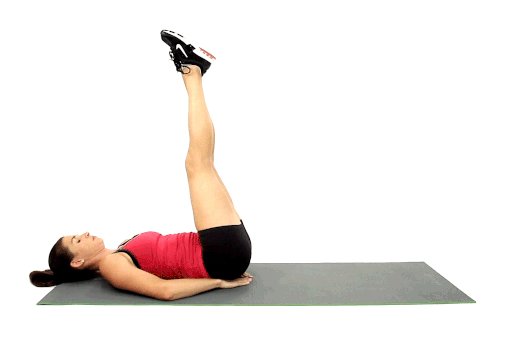
Seated leg lifts are a gentle exercise that targets the quadriceps and helps maintain mobility. Sit on a chair with your back straight, extend one leg straight out in front of you, hold for a few seconds, and then lower it back down. Repeat with the other leg.
How To Do It:
- Sit on a chair with your back straight and feet flat on the ground.
- Extend one leg straight out in front of you, keeping it parallel to the ground.
- Hold for a few seconds, engaging your quadriceps.
- Slowly lower your leg back down.
- Repeat with the other leg.
- Continue alternating legs for the desired number of repetitions.
Arm Circles
Arm circles are a simple yet effective exercise for strengthening the shoulder muscles. Stand with your feet shoulder-width apart, extend your arms out to the sides, and make small circles in a clockwise direction. After a set number of repetitions, switch to counterclockwise circles.
How To Do It:
- Stand with your feet shoulder-width apart and arms extended out to the sides.
- Make small circles with your arms in a clockwise direction.
- Keep your shoulders relaxed and engage the muscles of your arms.
- After a set number of repetitions, switch to counterclockwise circles.
- Maintain a controlled motion throughout and focus on your breathing.
Remember to consult with a healthcare professional before starting any exercise program, and listen to your body. Start with a comfortable level of intensity and gradually increase as you build strength and confidence.
Benefits Of Bodyweight Exercises For Seniors
Improved Muscle Strength
Bodyweight exercises engage multiple muscle groups, helping seniors improve their overall muscle strength. This increased strength enhances mobility, stability, and the ability to perform daily tasks with ease.
Enhanced Balance And Stability
Bodyweight exercises promote better balance and stability, reducing the risk of falls and related injuries. By strengthening the core and lower body muscles, seniors can maintain better control and coordination during movements.
Increased Bone Density
Weight-bearing bodyweight exercises, such as squats and step-ups, help stimulate bone growth and maintain bone density. This is particularly crucial for seniors who are prone to osteoporosis and related bone issues.
Improved Joint Health
Bodyweight exercises involve natural movements that help lubricate the joints and promote better joint health. The controlled and progressive nature of these exercises can aid in reducing joint stiffness and discomfort.
Enhanced Flexibility And Range Of Motion
Regular bodyweight exercises improve flexibility and increase the range of motion in joints. This can contribute to better posture, increased freedom of movement, and a reduced risk of muscle strains or injuries.
Cardiovascular Health
Many bodyweight exercises, such as brisk walking, jumping jacks, or mountain climbers, elevate the heart rate and provide cardiovascular benefits. These exercises help improve heart health, increase endurance, and enhance overall cardiovascular fitness.
Mental And Emotional Well-Being
Engaging in bodyweight exercises releases endorphins, the body’s natural feel-good hormones. This can result in improved mood, reduced stress levels, and increased mental clarity. Regular exercise also supports cognitive function and helps prevent age-related mental decline.
It’s important to note that before starting any exercise program, seniors should consult with their healthcare provider to ensure they are engaging in appropriate exercises based on their individual health conditions and fitness levels.
Things To Avoid While Doing The Best Bodyweight Exercises For Seniors
While bodyweight exercises for seniors offer numerous benefits, it’s essential to be aware of potential pitfalls and avoid certain mistakes. Here are some things to avoid while doing the best bodyweight exercises for seniors:
Overexertion
Avoid pushing yourself beyond your limits or performing exercises that cause excessive strain. Listen to your body and modify exercises as needed to prevent injury or excessive fatigue.
Incorrect Form
Maintain proper form during exercises to maximize their effectiveness and minimize the risk of injury. Pay attention to alignment, posture, and the movement patterns instructed for each exercise. Seek guidance from a qualified trainer if unsure about proper form.
Ignoring Pain
Never ignore or push through pain during bodyweight exercises. Discomfort or sharp pain could be a sign of injury or strain. Stop the exercise immediately if you experience any pain and consult with a healthcare professional if necessary.
Neglecting Warm-Up And Cool-Down
Before starting any exercise routine, warm up your body with gentle movements to increase blood flow and prepare your muscles. Similarly, cool down with stretches to promote flexibility and help prevent muscle soreness or stiffness.
Lack Of Variety
Avoid sticking to the same exercises all the time. A diverse range of bodyweight exercises helps engage different muscle groups, prevents boredom, and ensures balanced overall fitness. Incorporate variations and progressions to challenge yourself and continue making progress.
Skipping Rest And Recovery
Adequate rest and recovery are essential for seniors engaging in bodyweight exercises. Allow your body time to recover between sessions and listen to any signs of fatigue or overexertion. Rest and recovery help prevent burnout and reduce the risk of injuries associated with overtraining.
Remember, it’s always advisable to consult with a healthcare professional or a qualified fitness trainer before starting any new exercise program, especially for seniors. They can provide personalized guidance, consider any existing health conditions, and ensure you’re performing exercises that are safe and suitable for your specific needs.
FAQs
Can seniors with limited mobility or physical conditions benefit from bodyweight exercises?
Bodyweight exercises can be adapted and modified to accommodate seniors with varying levels of mobility or physical conditions. It’s important to consult with a healthcare professional or a qualified trainer who can provide guidance on selecting appropriate exercises and modifications tailored to individual needs. With proper modifications and gradual progressions, seniors can still experience the benefits of bodyweight exercises, such as improved strength, balance, and flexibility.
Are bodyweight exercises alone sufficient for seniors to maintain overall fitness?
While bodyweight exercises offer many benefits, it’s ideal to incorporate a well-rounded fitness routine that includes other components such as cardiovascular exercise, flexibility training, and possibly resistance training. Combining bodyweight exercises with activities like walking, swimming, or cycling can provide a comprehensive fitness regimen that addresses cardiovascular health and overall fitness needs. Additionally, adding some form of resistance training, whether through bodyweight exercises or light weights, can further enhance muscle strength and bone density.
How often should seniors perform bodyweight exercises?
The frequency of bodyweight exercises can vary depending on individual fitness levels and goals. As a general guideline, seniors should aim for at least two to three sessions of bodyweight exercises per week, with rest days in between for recovery. Each session should include a variety of exercises that target different muscle groups. It’s important to start gradually and increase the intensity, duration, or complexity of exercises over time as strength and fitness levels improve. However, it’s essential to listen to your body and not overdo it. If any pain or discomfort arises, it’s advisable to consult with a healthcare professional or fitness expert for guidance.

